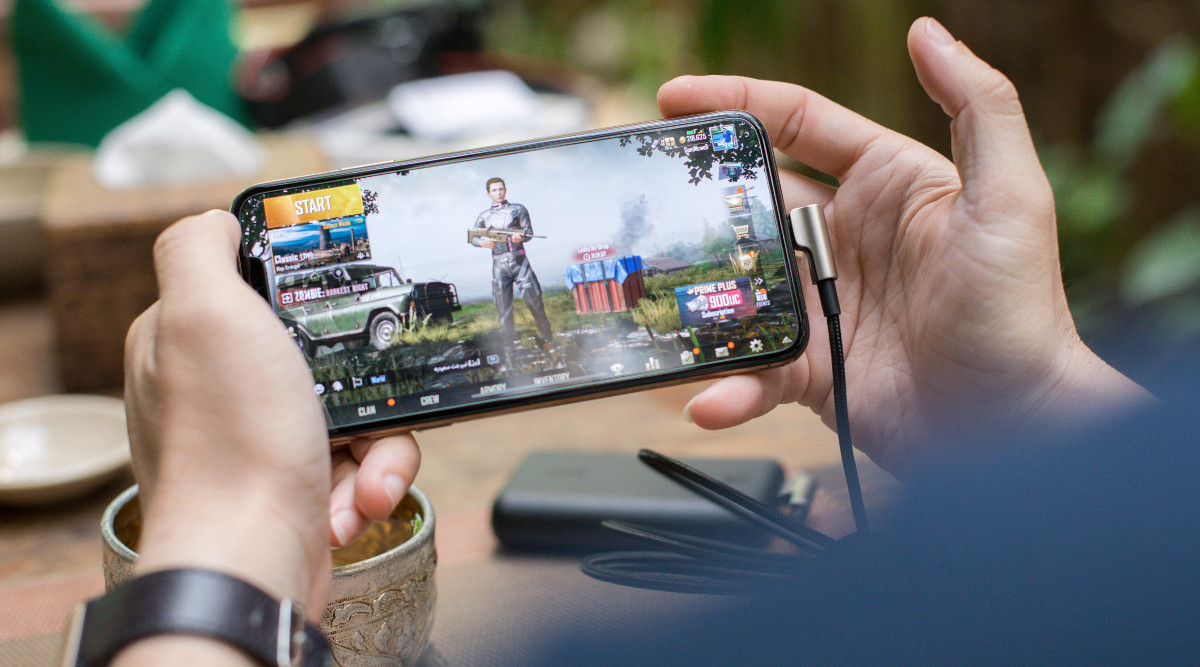By TRAVIS LOLLER, Related Press
NASHVILLE, Tenn. (AP) — As tens of millions of individuals journey the interstates this Thanksgiving, many will encounter patches of site visitors at a standstill for no obvious motive — no development or accident. Researchers say the issue is you.
Human drivers simply do not do a great job of navigating dense site visitors situations, however an experiment utilizing synthetic intelligence in Nashville final week means assist might be on the way in which. Within the experiment, specifically geared up vehicles had been capable of ease rush hour congestion on Interstate-24, researcher Daniel Work stated on Tuesday. Along with lessening driver frustration, Work stated much less stop-and-go driving means gasoline financial savings and, by extension, much less air pollution.
The professor of civil and environmental engineering at Vanderbilt College is one among a bunch of engineers and mathematicians from universities across the U.S. who’ve been learning the issue of phantom site visitors jams after a easy experiment in Japan a dozen years in the past confirmed how they develop. Researchers there put about 20 human drivers on a round monitor and requested them to drive at a continuing pace. Earlier than lengthy, site visitors went from a easy movement to a collection of stops and begins.
“Phantom site visitors jams are created by drivers such as you and me,” Work defined.
Political Cartoons
One particular person faucets the brakes for no matter motive. The particular person behind them takes a second to reply and has to brake even tougher. The subsequent particular person has to brake even tougher. The wave of braking continues till many vehicles are at a standstill. Then, as site visitors clears, the drivers speed up too rapidly, inflicting extra braking and yet one more jam.
“We all know that one automobile braking all of the sudden can have a huge effect,” Work stated.
Final week’s experiment confirmed that a couple of vehicles driving slowly and steadily might have an effect as nicely, for the higher.
The experiment utilized 100 vehicles that travelled in loops on a 15-mile part of I-24 from about 6 a.m. to 9:45 a.m. every morning. Engaged on the premise that if 5% of the vehicles on the highway had been appearing collectively, they may reduce the prevalence of phantom site visitors jams, the researchers geared up these 100 vehicles to speak wirelessly, sending site visitors info forwards and backwards.
In addition they took benefit of the adaptive cruise management that’s already an possibility on many new automobiles. This expertise lets the driving force set a automobile to cruise at a sure pace, however the automobile routinely slows down and hurries up as wanted to maintain a protected distance from the automobile in entrance. Within the experiment, the adaptive cruise management was modified to react to the general site visitors movement — together with what was taking place far forward — utilizing synthetic intelligence.
The vehicles’ decision-making occurred on two ranges, Work stated. On the cloud degree, details about site visitors situations was used to create an total pace plan. That plan was then broadcast to the vehicles, which used synthetic intelligence algorithms to find out one of the best motion to take. The researchers had been capable of consider the impact the linked vehicles had on morning site visitors movement utilizing a particular 4-mile stretch of I-24 outfitted with 300 pole-mounted sensors.
The experiment is a mission of the CIRCLES consortium, a bunch that features a number of automakers and the U.S. Vitality and Transportation departments. Different lead researchers are based mostly on the College of California, Berkeley; Temple College; and Rutgers College-Camden.
Liam Pedersen is deputy basic supervisor for analysis at Nissan, a CIRCLES consortium associate who was in Nashville final week for the experiment. He stated one of many thrilling issues about it’s that it builds on expertise that’s already in lots of new vehicles.
“This isn’t autonomous driving,” he stated. “That is one thing we might understand very quickly.”
Requested if automakers might be keen to cooperate to ease site visitors, Pedersen stated, “I actually hope so, as a result of the system works finest when heaps and plenty of vehicles take part.”
Final week’s experiment constructed off one Work and his colleagues performed in 2017 on the College of Arizona. That repeated the Japanese experiment, this time with a single self-driving automobile thrown into the combination. The self-driving automobile smoothed the movement of site visitors in order that there was 98% much less braking. That led to a 40% enhance in gasoline effectivity and a 14% enhance in distance pushed.
Researchers are nonetheless crunching the numbers on final week’s experiment, however Work stated it “demonstrated that these jams might be lowered by means of the novel automated car applied sciences we developed. It’s unquestionable that enhanced automotive expertise can considerably cut back phantom site visitors jams when carried out at scale.”
Nonetheless, he cautioned that the expertise just isn’t going to all of the sudden remove congestion.
“When there are extra vehicles on the highway than the highway can help, there’ll at all times be site visitors,” he stated. “However this will make that congestion much less painful.”
Copyright 2022 The Associated Press. All rights reserved. This materials might not be printed, broadcast, rewritten or redistributed.
Source 2 Source 3 Source 4 Source 5


